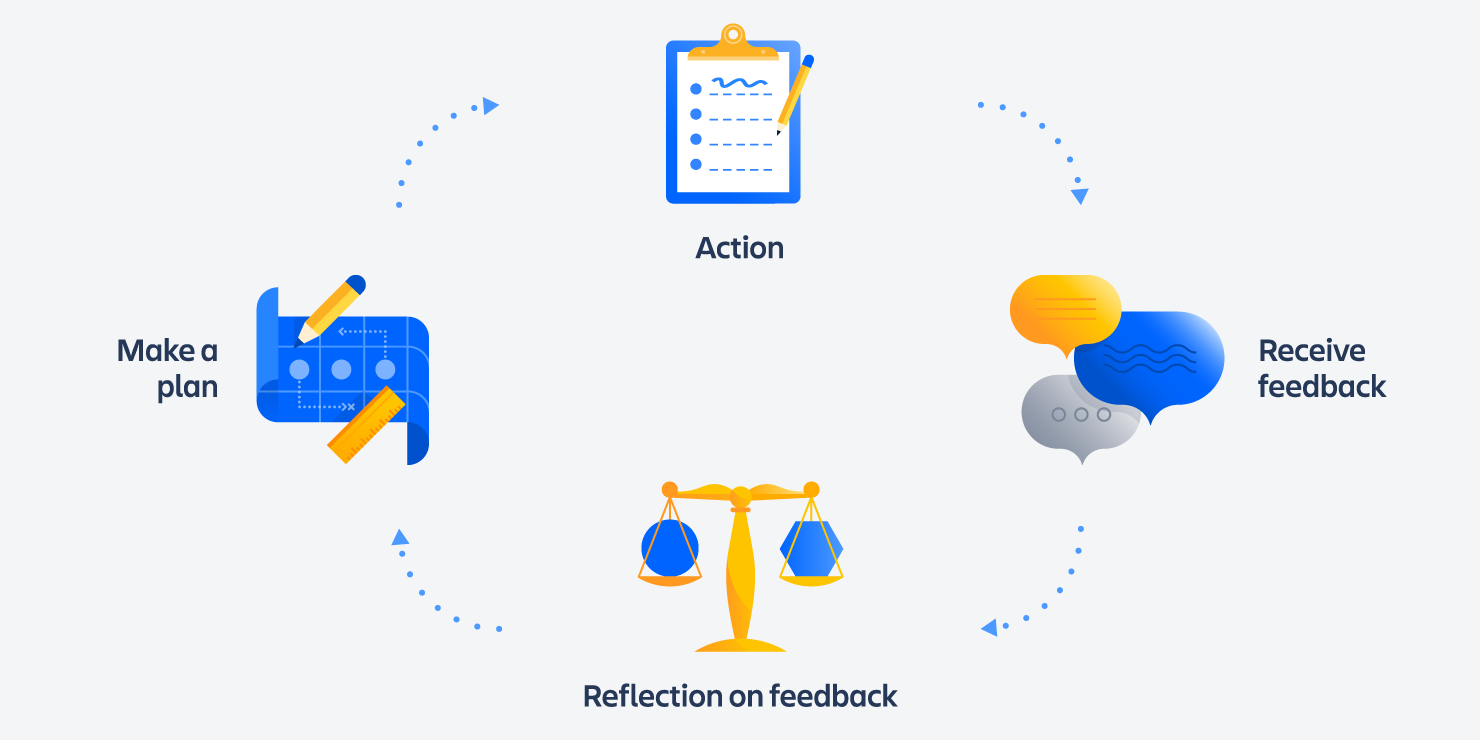Steal this micro-feedback strategy from one of the world’s top cycling teams
Focusing on 1% improvements can help your team scale mountains.
In 2003, the Great Britain cycling team was the epitome of mediocrity. In nearly 100 years, they’d won only a single gold medal in the Olympics, and hadn’t won the Tour de France in over 110 years. In fact, one of the top bike manufacturers in Europe refused to sell to the team because they feared it would harm their brand.
A mere five years later, things looked very different. The team nabbed eight gold medals at the 2008 Olympics, and won 14 in total. Members from Team GB then went on to win the Tour de France six times in seven years.
How did the team make such massive gains? Believe it or not, it wasn’t by thinking big – in fact, it was the opposite. By focusing on 1% improvements that built in micro-feedback loops, this mediocre team transformed itself into a veritable medal factory.
If you’re looking to supercharge your own team (and your career), this is a strategy worth stealing. Let’s talk about how it works and how you can adapt this concept from the open road to your remote team.
Small wins and fast changes
We’re all familiar with the traditional feedback loop: you receive feedback, reflect on it, make a plan, and then take action.

But whether you’re a team lead or a coach, you’re also giving and receiving micro-feedback every day, in the form of small corrections, reactions, and check-ins that influence behavior. Micro-feedback can even come from the environment – if you have a sore neck at the end of the work day, that might prompt you to reposition your screen.

What Team GB did – and what you can do, too – is tune these micro interactions to create nearly instant changes that create a culture of continuous improvement within your regular feedback loops.
Sir David Brailsford, the former head of Team GB, explained it this way in an interview with Harvard Business Review. “When we first started out, the top of the Olympic podium seemed like a very long way away. Aiming for gold was too daunting. As an MBA, I had become fascinated with Kaizen and other process-improvement techniques. It struck me that we should think small, not big, and adopt a philosophy of continuous improvement through the aggregation of marginal gains. Forget about perfection; focus on progression, and compound the improvements.”
Brailsford’s goal was to find 1% improvements in all the things that factored into a cycling team’s success – everything from aerodynamics to human performance. He began implementing small changes, like redesigning the bike seats to be more comfortable, and optimizing nutrition and sleep recommendations for each competitor.
Think about this in the context of your team. The beauty of this technique is that small tweaks that provide immediate feedback can be easily modified if they aren’t paying off.
Micro-feedback works because it’s placed in the context of the big picture. In addition to informal context-sharing, teams, and particularly managers, should utilize long-form goal-setting, feedback sessions, and sparring sessions to create shared context.
Trust is also key, and leaders of high-performing teams let that guide their strategy. Research from the Gottman Institute found that for every negative comment, we require five positive comments to maintain a “full tank.”
I never criticize a player until they are first convinced of my unconditional confidence in their abilities.
John Robinson, College Football Hall of Fame, Former Coach for USC and LA Rams
By using trust to build shared context, John Robinson and other top coaches are able to create an environment where micro-feedback can positively impact the outcome.
How to use micro-feedback with your virtual team
In an office environment, micro-feedback happens as a matter of course in the 60-90 second interactions while walking back to your desk after a meeting or grabbing a coffee refill.
But as more employees go remote, opportunities for micro-feedback have become more challenging. In a virtual work setting, we lose the chance interactions that shape our work and give us insight into how our contributions influence other projects or teams. Because each interaction is intentional in a remote-work environment, we need to create space for context-sharing so that we can give and receive meaningful feedback.
3 keys to successful micro-feedback
As we saw in the opening example with Team GB, the coach relied on experimentation to improve the team’s performance. He made tiny adjustments until he optimized each input for each member of the team. He didn’t simply apply a broad new seat height or handlebar grip to every member, he experimented with each element, for each person, until he found the winning combination of routines, equipment, and advice.
Experimentation is challenging within a traditional feedback loop, where it takes minutes or hours to formulate and deliver feedback, hours or days to reflect on that feedback and make a plan for action, and potentially months to see improvement.
Instead, micro-feedback seeks to tighten that loop to seconds or minutes. It relies on tying the action so completely to the moment that it nearly eliminates the “reflect” and “plan” actions (or relies on “muscle memory”) to act.
To achieve this, micro-feedback uses triggers, spontaneity, and micro-actions.
1. Set up triggers
A high school track athlete fondly remembers a coach that would say, “Drive your arms, baybay!” He usually yelled the phrase just at the point in the race where his athletes were too tired to run faster, yet somehow, pumping the arms made the legs go faster.
In a remote work setting, a trigger might be a short-hand word or phrase. Consider the example of a program manager, on a path to promotion. They have a strong foundation of trust and shared context with their manager and several senior team members about their long-term career growth, which includes facilitating meetings with executive colleagues and ultimately driving toward strong execution. Since they’re new to running these types of sessions, their pacing is a bit off. To correct this in the moment, one of their trusted teammates Slacks them, “speed up” or “slow down” or “higher level” or “dive deeper.”
The five seconds of feedback contained in those two words changes their behavior in the moment. They keep receiving these micro-corrections throughout the hour-long meeting, adding up to tens of pings to keep them focused. This allows them to tie their actions directly to a pacing issue.
2. Plan to be spontaneous
In the sports world, coaches don’t have time to give a long, drawn-out explanation every time they need a player to adjust – especially during the 30-second timeout. Using the short-hand phrases developed in previous interactions, a coach can deliver quick, spontaneous feedback to a player.
For in-person interactions, this might look like a simple, “How do you think that client meeting went?” while walking back to your desks.
But distributed teams need to intentionally create space for “spontaneous” micro-feedback. For example, using the shorter meetings feature in Google Calendars allows a small buffer between meetings for conversation to continue or chats to happen afterward. Set your meetings to 25- or 50-minutes to allow for team members to connect immediately after the meeting. For even quicker feedback, use a mid-meeting check-in to assess comprehension or alignment using a thumbs up, down, or sideways action.
Alternatively, ping a teammate after a meeting to ask for a 1-10 score on how the meeting went for them. By immediately exchanging micro-feedback, teammates can quickly share impressions, and the receiver can choose to dig more or react given information they already have.
3. Utilize micro-actions
While all effective feedback is actionable, micro-feedback must contain a specific action, unique to a single moment.
In “Throw Like a Girl,” former pro softball pitcher Jennie Finch explained how the U.S. women’s national softball team took a creative approach to recovering from mistakes. The team psychologist brought a tiny toilet to practice. When someone struck out, they had to “flush” the toilet to symbolize letting their feeling of defeat go.
In a business setting, many people struggle with vocal fillers, such as “um, uh, or like” or apologizing too much as they’re speaking. The action is clear: stop using this word. The micro-feedback is having a colleague visibly note when they use that word. It doesn’t have to be a big, showy interruption in the middle of the meeting, but a simple number in a private chat or holding up a finger on video to indicate that, “You just did it again” is enough for your teammate to recognize the need to change their speech.
In this case, a single ping equals a single vocal filler. The feedback-to-action ratio is 1:1, which means that the person gets another chance to improve with their next sentence.













































